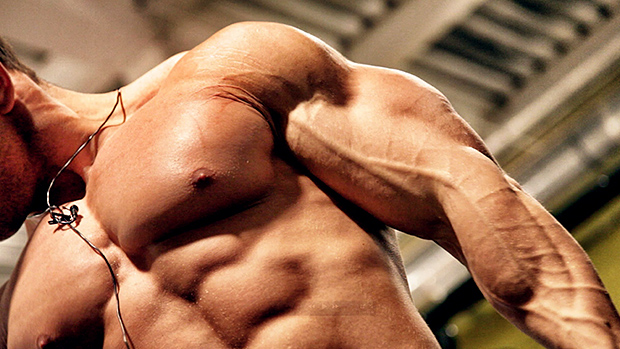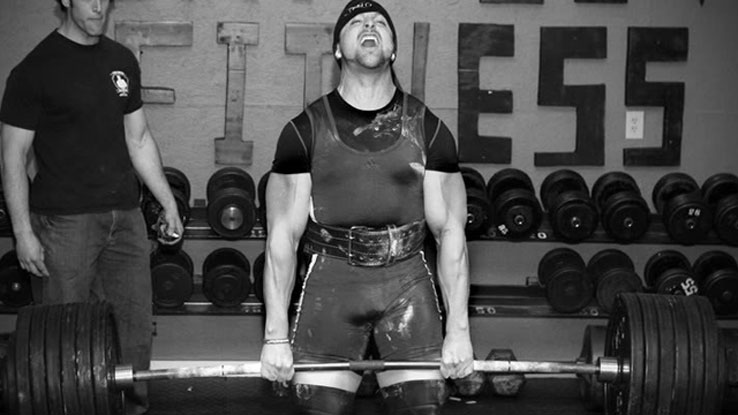Time to Get Primed
Back in high school, I desired horsepower-infused muscle cars almost as much as I desired loose women on a Saturday night. I lusted for a V8 that could not only rip the enamel off my teeth between stoplights, but also turn heads with its lustrous black hue. Due to my miniscule bank account at the time, I often settled for muscle cars that possessed paint jobs indicative of a '78 Pinto after an acid rain-filled typhoon. As such, I had to learn to paint the damn things myself.
Luckily, my hometown consisted of a few rubes that were well-suited to teach this needy hoss a thing or two about automotive painting. In exchange for a 12-pack of Coors, a roll of Copenhagen and a few magazines filled with scantily-clad vixens, I acquired the skills necessary to become a "purveyor of pigmentation." The most important lesson I learned related to priming.
I quickly learned that a superlative base of primer subsequently lead to a finish that induced "aerola-engorged nippledom" from Farmer Jones' crop-top filled daughters. While this analogy might not seem immediately apparent, it perfectly coincides with your physique-enhancing efforts.
Fatigue vs. Potentiation
The effectiveness of any hypertrophy-specific program is highly correlated with the state of the nervous system during training. Generally, two extreme and opposite nervous system states can be considered within a spectrum.
At one end of the spectrum is potentiation. This can be best explained as a "primed state" suited for extraordinary performance. The other end represents fatigue, or an inability to invoke optimal levels of performance. Such a notion can be depicted with a simple spectrum:
Neuromuscular System
Fatigue <– ----------------------------- –> Potentiation
(Lowest level of performance)(Highest level of performance)
With reference to the above spectrum, it quickly becomes apparent that a "primed" state of potentiation is most optimal. Moreover, priming the nervous system allows for enhanced motor unit recruitment and more efficient neuromuscular activity. Such phenomena allows for larger training loads that sufficiently enhance muscular growth. In other words, potentiation leads to greater strength, and greater strength leads to more muscle.
Now do you see why I want you to acquire "priming" skills in order to impress the opposite sex? Good, now let's move on to the tasks necessary to get you primed for muscle!
Supramaximal Holds
In the past, strongmen such as Paul Andersen often employed a technique that induced extraordinary levels of strength performance. This technique involved the utilization of a supramaximal load (greater than 1RM or rep max) in an effort to prime the nervous system for enhanced performance.
For example, these strongmen would often hoist a barbell across their upper back with a load significantly greater than they could full squat. After a few seconds of this demanding technique, they briefly rested and found that their strength was subsequently enhanced.
Such a method has been linked to many names, but one of the best-recognized is heavy supports. Taken literally, the term usually relates to supporting the load while the joints are just shy of lockout. Nevertheless, I tend to avoid using the term heavy supports in favor of supramaximal holds.
Supramaximal holds effectively induce a neuromuscular phenomenon known as postactivation potentiation. This event is caused by numerous complex mechanisms with an emphasis on phosphorylation of the myosin regulatory light chains. (1) Such a response can be effectively induced by supramaximal holds.
After the hold, the ability to perform a maximal voluntary effort is enhanced due to increased sensitivity of the contractile proteins that effectively bind up large amounts of Ca+2 that were released during the supramaximal hold. Therefore, due to enhanced force of the mechanical twitch you end up stronger than before. (2, 3) Cool stuff!
Numerous high-profile strength coaches have extolled the virtues of this phenomenon, but oftentimes the science they employ to decipher this technique is well, wrong. I've read many feeble attempts to explain how supramaximal holds work and one of the most popular is something along the lines of "overriding Golgi Tendon Organ (GTO) inhibition."
I don't want to rip on other strength coaches, but I must state that this reasoning is antiquated at best. You see, GTOs were once thought to provide a protective function that prevented muscular damage during extremely high levels of tension. Neuroscientists now know that this is certainly not the case. Instead, GTOs represent an extremely complex integration of sensory information that allows for precise motor control.
But I'm digressing. Let's drop that topic and get right to the good stuff: how to use this technique to get bigger and stronger!
How to Incorporate Supramaximal Holds
Exercises: For the most profound benefits, you must utilize compound exercises. Such exercises effectively target hundreds of muscles. Don't waste your efforts on sissy-assed isolation exercises. In order to reap the full benefits of supramaximal holds, you must utilize a compound exercise that allows for huge loads, thus maximizing postactivation potentiation.
Loading: It's been demonstrated that mind-blowing loads can be used with this technique. Nevertheless, I've found a range of 125 to 140% of 1RM to be ideal. This range has shown to be both effective and safe.
Initially, I recommend all trainees to utilize a load that's 125% of their 1RM. From that point, the load will be steadily increased every two weeks. I know of many trainees who perform supramaximal holds with 180% of their 1RM, but such a load isn't advisable except for the super-elite. So, adhere to my loading prescriptions.
Duration of Hold: Research has shown that 5-10 seconds of maximal effort invokes the greatest level of potentiation while minimizing fatigue. (1) Initially, I prefer my clients to perform a five second hold for the first workout. With each subsequent workout I'll increase the duration of the hold by one or two seconds. This continues for two workouts before I increase the load.
Joint Position: When you first try this technique it'll immediately become apparent that lowering the weight too far isn't desirable. In fact, you'll be shakin' like an espresso addict. Therefore, you should slightly unlock your joints (i.e. lower the load) only a few inches and hold it steady.
Rest Before Max Voluntary Effort: The purpose of the supramaximal hold technique is to allow you to perform either 1) more reps with a given maximal load or 2) more load (2.5 to 5%) for one to three repetitions. In either case, you'll need to rest 60-90 seconds after the priming supramaximal hold before your work set.
Rules and Parameters
Even though supramaximal holds are powerful, they should be used infrequently. In other words, it's not advised to utilize this technique for all exercises in every session. Instead, you should incorporate this method before exercises that you seek to improve the most. In addition, it's advised that you use supramaximal holds at the beginning of your workout when your nervous system is least fatigued.
Importantly, not all exercises are well-suited for the supramaximal hold technique. Basically, you should choose compound exercises that are initiated in the most advantageous, force-producing joint position. For example, squats, bench presses and military presses are all initiated with advantageous joint positions, thus making them ideal.
Instead of explaining the complexities of biomechanical issues and joint position, I'll simply give you a list of exercises best suited for supramaximal holds. Here are the parameters you should utilize with this technique:
Exercises: Back Squats, Front Squats, Incline/Flat/Decline/Close Grip Bench Presses,
Seated Military Presses*, Dips*, and Romanian Deadlifts with wrist wraps*
Load: 125-140% of 1RM
Duration of Hold: 5-10 seconds
Joint Position: Just short of lock-out
Rest Before 1-3RM Effort: 60-90 seconds
*You must initiate these movements from the lockout position.
The "Primed For Muscle" Program
Now it's time to put it all together. Supramaximal holds will catapult your strength levels that will, in turn, allow you to gain more muscle. Ideally, I want you to choose one upper body and one lower body exercise that you seek to improve the most. Or you can simply think of it this way: which muscle groups are most lagging that the above exercises tax?
It's necessary to utilize two different movements – performed on different days – for each primary muscle group throughout the week. Here are the exercise pairings I've found most effective for the following muscle groups:
Chest: Flat Bench Press and Decline Bench Press
Triceps: Close-Grip Bench Press and Dips
Shoulders: Incline Bench Press and Military Press
Quads: Front Squats and Back Squats
Low Back/Hamstrings: Back Squats and Romanian Deadlifts
Here's an example. Let's say your quads and pectorals need some serious help. Furthermore, let's say you perform your upper body work on Monday and Thursday, and your lower body work on Tuesday and Saturday. Therefore, your next four weeks will look like this:
WEEKS 1, 2, 3, 4
DAYS 1, 8, 15, 22
Exercise: Flat Bench Press (Primer)
Sets: 1
Load: 125% of 1RM, 130%, 135%, 140%
Duration of Hold: 5, 7, 9, 10 seconds
Rest: 75 seconds
In other words, on day one the load is 125% of 1RM with a five second hold. On day eight the load is 130% of 1RM with a seven second hold, and so on.
Exercise: Flat Bench Press (Work Set)
Sets: 1
Reps: As many as possible
Load: 85% of 1RM, 90%, 92.5%, 95%
Rest 3 minutes and perform back, shoulder, biceps and triceps work with 5 x 5.
DAYS 2, 9, 16, 23
Exercise: Barbell Back Squat (Primer)
Sets: 1
Load: 125% of 1RM, 130%, 135%, 140%
Duration of Hold: 5, 7, 9, 10 seconds
Rest: 90 seconds
Exercise: Barbell Back Squat (Work Set)
Sets: 1
Load: 85% of 1RM, 90%, 92.5%, 95%
Reps: As many as possible
Rest 3 minutes and perform hamstring, calf and abdominal work with 8 x 3.
DAYS 3, 10, 17, 24
Off, perform cardio and/or GPP work, if desired.
DAYS 4, 11, 18, 25
Exercise: Decline Bench Press (Primer)
Sets: 1
Load: 125% of 1RM, 130%, 135%, 140%
Duration of Hold: 5, 7, 9, 10 seconds
Rest: 75 seconds
Exercise: Decline Bench Press (Work Set)
Sets: 1
Load: 85% of 1RM, 90%, 92.5%, 95%
Reps: As many as possible
Rest 3 minutes and perform back, shoulder, biceps and triceps work with 8 x 3.
DAYS 5, 12, 19, 26
Off, perform cardio and/or GPP work, if desired.
DAYS 6, 13, 20, 27
Exercise: Front Squat (Primer)
Sets: 1
Load: 125% of 1RM, 130%, 135%, 140%
Duration of Hold: 5, 7, 9, 10 seconds
Rest: 90 seconds
Exercise: Front Squat (Work Set)
Sets: 1
Load: 85% of 1RM, 90%, 92.5%, 95%
Reps: As many as possible
Rest 3 minutes and perform hamstring, calf and abdominal work with 5 x 5.
DAYS 7, 14, 21, 28
Off, perform cardio and/or GPP work, if desired.
Supplementation
Spike: Take 1-2 capsules approximately 30 minutes before the workout. This incredibly effective mind/muscle booster will enhance your ability to perform maximal efforts.
Surge: Immediately after your primer/work set combination, ingest one full serving of Surge. Within 30 minutes of ending the total session, ingest another full serving of Surge mixed with 5 grams of micronized creatine.
Carbolin19: This is the newest edition to the anabolic line of Biotest products. Take as directed to further enhance your muscle-building efforts.
Conclusion
The Primed For Muscle program is demanding, yet extremely effective. It'll enhance maximal strength and subsequent hypertrophy at lightning speeds. Now go get primed!
References
1. Baudry S, Duchateau J. Postactivation potentiation in human muscle is not related to the type of maximal conditioning contraction. Muscle & Nerve 2004, 30: 328-36.
2. Grange RW, Vandenboom R, Xeni J, Houston ME. Potentiation of in vitro concentric work in mouse fast muscle. J Appl Physiol 1998, 84: 236-43.
3. Sweeney H, Bowman BF, Stull JT. Myosin light chain phosphorylation in vertebrate striated muscle: regulation and function. Am J Physiol 1993, 264: 1085-95.




